Best Indoor Plants
This article on best indoor plants is an addition to my eBook "Growing House Plants for The Beginner Enthusiast." And, as promised to my readers, here are house plant pictures of some of the best indoor plants we talked about in the book.
You may recall I discussed several types of indoor house plants that are non toxic and other plants that are toxic to you and your children, as well as plants that are poisonous to cats and dogs.
For those of you who do not have children (or children visiting), or pets, then a concern of which plants are toxic or non toxic should be of no concern.
For you guys and gals, any of these house plants pictures are the best indoor plants you might want to consider. And, all of them will remove one type or another pollutant from the air. Do refer to my book for identifying house plants which are the best indoor plants for purifying the air.
Let's get started.
To begin, I will identify house plants that are best indoor plants for your home. Some of these plants may be toxic, and I'll identify these plants below in their appropriate heading.
House Plant Pictures
Best Indoor Plants for Your Home
These are some of the best plants to remove pollutants from the air in your home.
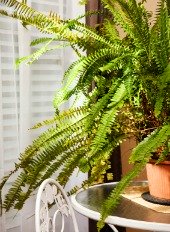

Boston Fern
Benefit- Plant adds moisture to the air.
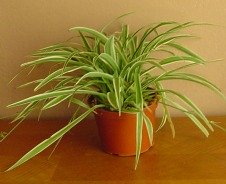

Spider Plant
This wonderful plant is no stranger to just about any indoor plant owner including indoor house plants owners just starting out.
Not only known for its beauty, it is one of the most effective plants for removing pollutants from the air.
The spider plant is quite happy in just about any location of your home where it receives indirect sunlight. It is not demanding of your time only requiring you keep its soil moist but not soggy when needed.
Benefits- Purifies the air faster than most indoor plants and is quite efficient at removing formaldehyde spores from the air.

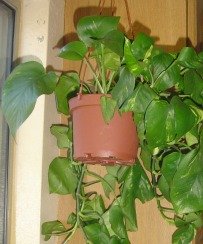
Philodendron
Like the spider plant, the philodendron is extremely effective removing pollutants from the air. It is also similar to the spider plant in that it enjoys an indirect sunlight exposure.
Water the philodendron when the top soil is dry until moist but not soggy.
Both the philodendron and spider plants make a great hanging decoration in any window of your home that doesn't receive long hours of direct sunlight.
As a plant that requires such a low maintenance, it is one of the best indoor plants you can buy.
Benefits- This plant purifies air by removing formaldehyde and is an effective purifier in your home if it has been newly renovated with new floors, walls, or carpet.
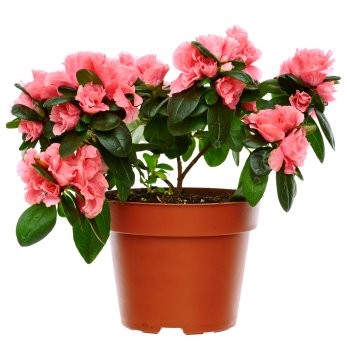

Azalea
This beautiful plant makes a great decoration in your home and does quite well in a shady location.
The azalea prefers a moist soil but not soggy. When watering, place in a sink partially filled with water, just enough to cover the plants pot holes and water up until the top soil is slightly moist.
With tender loving care, the azalea will re-bloom and while your waiting, its leaves work hard to remove household pollutants from the air.
Benefit- Plant removes formaldehyde from the air.

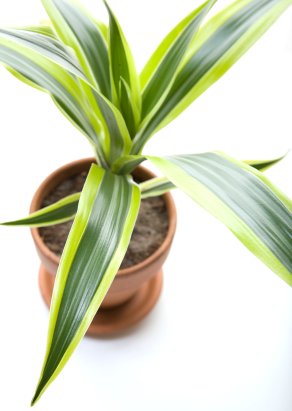
Corn Plant
This is a great plant if you have lots of shady areas in your home. You can locate it just about anywhere that receives shady or low light such as hallways.
The corn plant is not a demanding plant for a whole lot of attention, requiring water only when the top two inches of the soil is dry. It is not a deep rooted plant and the roots are located close to the cane. Therefore when watering make sure this area gets sufficient water to be absorbed by the roots.
If you notice the leaves turning yellow or dropping off, it is a good indication of the plant been overwatered.
Benefit- Plant removes formaldehyde from the air.
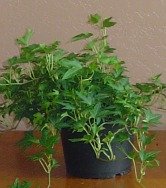

English Ivy
Like the spider plant and philodendron, the english ivy is a great hanging plant.
It doesn't really like a lot of light so locate the plant away from any area that receives direct light.
Water when the top two inches of the soil is moist.
Benefit- Plant removes benzene from the air.
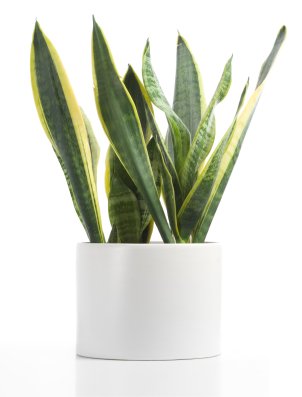

SNAKE PLANT (also called Mother-in law's tongue)
*It has been said by some folks, "the one plant that is impossible to kill." From my experience I'd say that's about right.
Note* An excerpt from my book "Growing House Plants for The Beginner Enthusiast." Available at Amazon.com
Benefits- Air purifier and removes nitrogen oxide produced by fuel burning appliances such as wood stoves or fire places. Also, this plant removes formaldehyde as efficiently as the philodendron.
Because this plant can tolerate a lot of neglect, and because it has great air purifying qualties, I definately recommend adding the snake plant to your list of best indoor plants.
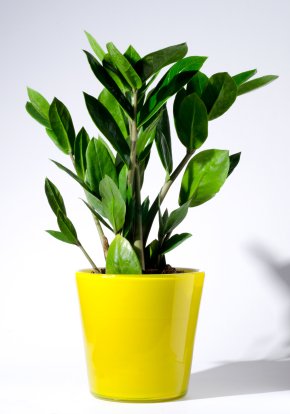

Zeezee Plant
Similar to the Snake Plant, the Zeezee plant is the perfect choice if you're not big on paying attention to your house plants on a regular schedule.
This plant requires little water and is happy just about anywhere in your home including the most shaded areas.
As with the snake plant, the zeezee plant should also be added to your list of best indoor plants.


Peace Lily
The peace lily has beautiful spathes and can grow quite large. It does quite well in an indirect light location requiring water once a week.
Benefits- This plant removes benzene, trichloroethylene, and mold spores from the air.
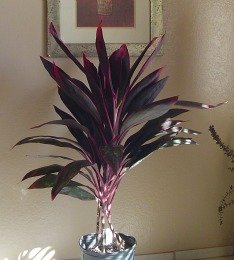

Cordylyine
The cordyline like the peace lily, can grow quite large. It does however, require more light. In the summer season locate near an east facing window, and during the winter season place near a south or west facing window.
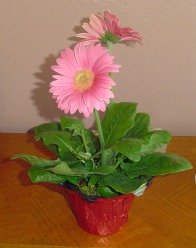

Gerbera Daisy
This beautiful plant is quite common in many households especially during the summertime. Unfortunately, the bloom doesn't stay around too long. When the flowers are gone, the plant leaves still add a nice ambience to your home.
Benefits- This plant release oxygen at night and removes benzene and trichloroethylene from the air.
Keep this plant when the bloom is gone because of its benefits for air quality.


Cyclamen
Like the gerbera daisy, this beautiful plant blooms for several months. Be careful where you locate this plant as it does not like direct light for long hours of the day. As with any flowering plant, when the bloom is gone, enjoy its plants leaves.
The list of best indoor plants for your home goes on and on and far too numerous to add to this page.
If you are interested in names of other plants best suited for your home, you can read about them in my book.
Don't forget to visit My Gift Shop.
After browsing my Gift Shop, you will see a link that will take you back here where left off reading.
Safe Plants for Adults and Children
Even though for most adults and children, the following best indoor plants are safe to have in your home, some plants may cause a reaction in sensitive individuals.


Boston Fern
May cause an allergic skin reaction for sensitive children and adults.


Gerbera Daisy (also known as African Daisy)
With lots of care, the bloom will last from four to six weeks.
Keep the soil moist but don't overwater, and locate the plant near a sunny window.


African Violet
Like the Gerbera daisy, the African violet is a truly beautiful plant. This plant enjoys indirect sunlight rather than full sun. The leaves are extremely sensitive to cold water increasing the chance of fungus developing on the leaves. Only water this plant when the soil feels dry by placing the pot in a small amount of water enough to cover the pot holes, and leave in the water until the soil becomes moist at the top.


Baby's Tears
It is a creeping plant and popular with gardeners to add a touch of beauty to the garden. It can also be grown as a house plant and tolerates shady places quite well. This is a good indoor house plant to keep in mind for those areas of your home with little natural light.


Christmas Cactus (also called Thanksgiving cactus)
The Christmas cactus is a popular plant during Christmas and
thanksgiving.
Because this plant is a cactus, there is a common belief it will withstand long periods of time without water.
While it is true you don’t have to water as frequently as most other house plants, the Christmas cactus still requires a regular watering schedule.
This plant is sensitive to light conditions. Too much light will cause the leaves to turn a reddish color, while too little light will prevent it from flowering.
However, day length is important for the plant to flower; darkness of at least 12 hours is necessary to encourage bud formation and include around 8 days of 16 hours of darkness and a room temperature around 61F-16C.


Jade Plant
Let soil dry before watering. The use of a water moisture tester will tell you when this or any plant is dry and requires water.
Please note that some indoor house plants require the soil be moist at all times. But not so with the Jade plant.
This plant is best located in an area of your home that receives indirect light, although the plant can withstand 4 hours a day of full sun. The best indoor temperature for this plant is around 55F-13C to 65F-18C.
To encourage blooming, allow the plant to go without water around the time of first frost, and withhold watering completely when days get short for around two weeks. Then begin watering as usual.


Norfolk Island Pine
Actually, it is not a true pine and is far too sensitive to the cold to be grown outdoors in Europe or the U.S. However, with a little care it does make a great house plant.
This plant prefers a temperature ranging from 60F-15C to 70F-21C by day and a little cooler at night. It does like direct sunlight as well as indirect light.
For the plant to remain healthy, locate it near a window that receives full sunlight and remember to turn the plant a quarter turn once a week to prevent it from leaning toward the window.
Like most tropical plants, only water when the top two inches of the soil feel dry. The use of a water moisture meter will let you know when to water.


Corn Plant
In terms of care, the corn plant isn't as demanding as most indoor house plants. This plant enjoys indirect light (for a definition on indoor lighting conditions read my book from Amazon.com) and can withstand several hours of direct sunlight. Too little light such as a shaded area will result in leaves losing their stripes.
Keep this plant evenly moist and water when you notice the top two inches of the soil is dry. The corn plant is sensitive to fluoride in the water and it's worth considering the use of filtered water.
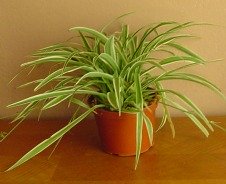

Spider Plant
Of all the best indoor plants for your home, the spider plant is probably the most well known. Probably the reason is because it doesn't demand much of your attention for care, because it remains healthy and vibrant from a light source ranging from bright indirect light to semi-shade. However, leaves will burn if they are located in direct sunlight for any length of time.
Spider plants like it best when the soil is moist to the touch but not overly wet where the soil is soggy. I find the use of a soil moisture meter is helpful to keep the soil moisture consistent.
As with the above heading "Best Indoor Plants for Your Home," there are many more plants too numerous to include in this article on "Safe Plants for Adults and Children."
To learn about the names of more Safe Plants, I have included their names in my eBook. Near the bottom of this article, I'll provide a link to Amazon.com Kindle edition for those of you interested in this book. Kindle also offers you the choice of the eBook or download a copy to your computer.
Poisonous House Plants
Identifying house plants
poisonous to Children and Adults
The following list of plants if ingested, according to the University of Connecticut Cooperative Extension Service, may cause symptoms ranging from mild stomachache to heart and kidney failure.
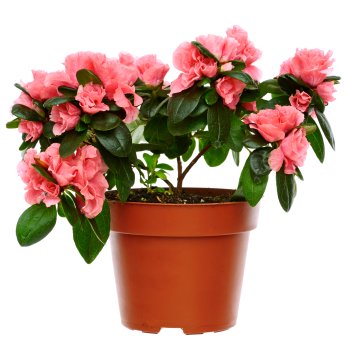

Azalea
Toxic if ingested by Adults, Children, and Pets. May cause vomiting, diarrhea, hyper salivation, weakness, and coma in cats and dogs.
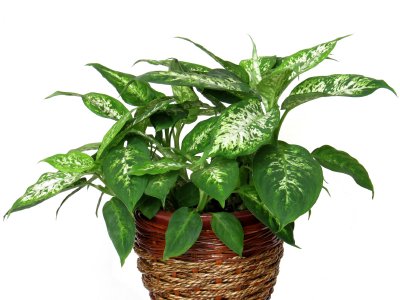

Dumb Cane (also called Dieffenbachia)
Other symptoms if ingested-Swelling of lips, tongue and throat, difficulty speaking, nausea, vomiting, diarrhea if plant eaten.
Reference- North Carolina State University.


English Ivy
Additional Symptoms- Plant may cause weeping blisters, difficulty in breathing, vomiting, and convulsions. Reference- North Carolina State University.
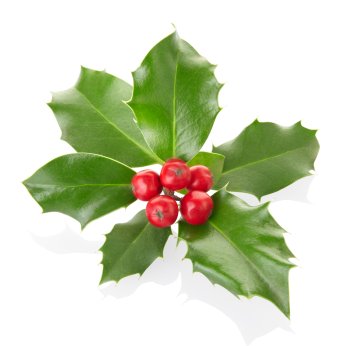

Holly Berries
If ingested, may cause symptoms ranging from mild stomachache to heart and kidney failure.
Reference-University of Connecticut Cooperative Extension Service.
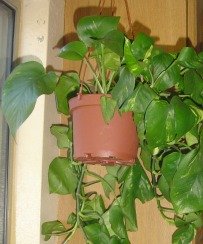

Philodendron
Symptoms- May cause swelling of the lips, tongue, and throat. Difficulty speaking and slurred words. Reference- North Carolina State University.
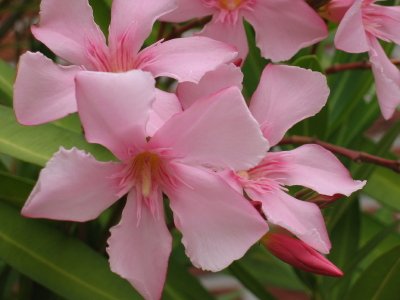

Oleander
Symptoms- Arrhythmia; may cause death, bloody diarrhea, and vomiting. This plant is loaded with arsenic in its leaves. Reference- North Carolina State University.
Personal Note*
The Oleander plant is not recommended for your home.


Jerusalem Cherry
Symptoms- Dilated pupils, loss of sensation, vomiting, stomach pain, and respiratory problems. Reference- North Carolina State University.


Calla Lily
Symptoms- Burning or swelling of tongue, lips, and throat. Stomach pain, diarrhea, may be fatal to some children. Reference- North Carolina State University.


Croton
Symptoms- May cause skin rash, nausea, vomiting, diarrhea when eaten. Reference- North Carolina State University.
House Plants Poisonous to Cats and Dogs
Especially curious kittens and puppies
Before you consider any of these plants for your home, I would suggest you first check with you pet's veterinarian and follow his/her advice.
Excerpt from my book.

Aloe
Symptoms- Vomiting, depression, diarrhea, anorexia, tremors, change in urine color. Reference- ASPCA
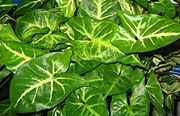

Arrowhead Vine
Symptoms- Oral irritation, intense burning and irritation of mouth, tongue and lips, excessive drooling, vomiting, difficulty swallowing. Reference- ASPCA
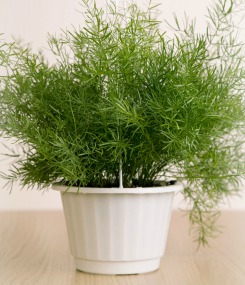

Asparagus Fern
Symptoms- Allergic dermatitis with repeated dermal exposure. Berry ingestion could result in gastric upset such as vomiting, abdominal pain, or diarrhea. Reference- ASPCA
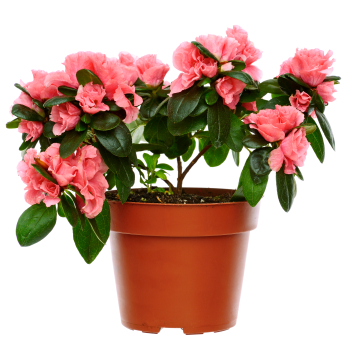

Azela
Symptoms- Vomiting, diarrhea, hypersalivation, weakness, coma, cardiovascular collapse and death.
Ingestion of a few leaves can cause serious problems.
Reference- ASPCA
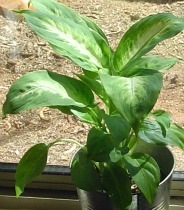

Chinese Evergreen
Symptoms- Oral irritation, intense burning and irritation of mouth, tongue, and lips. Excessive drooling, vomiting, and difficulty swallowing. Reference- ASPCA
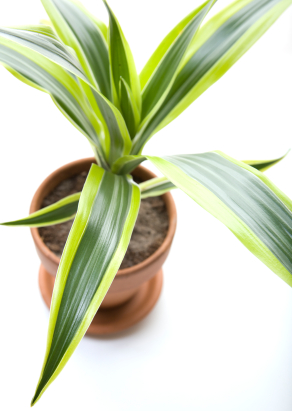

Corn Plant
Symptoms- Vomiting (occasionally with blood), depression, anorexia, hypersalivation, dilated pupils (cats). Reference- ASPCA


Cyclamen
Symptoms- Salivation, vomiting, diarrhea.
Following large ingestion of tubers: heart rhythm abnormalities, seizures, and death. Reference- ASPCA


Jerusalem Cherry
Symptoms- Gastrointestinal disturbances, possible ulceration of the gastrointestinal system, seizures, depression, respiratory depression, and shock. Reference- ASPCA
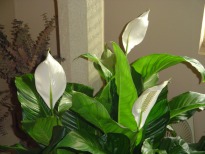

Peace Lily
Symptoms- Oral irritation, intense burning and irritation of mouth, tongue and lips. Excessive drooling, vomiting, and difficulty swallowing. Reference- ASPCA
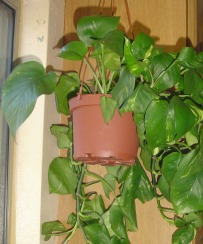

Philodendron
Symptoms- Oral irritation, intense burning and irritation of the mouth, lips, tongue, excessive drooling, vomiting, difficulty in swallowing. Reference- ASPCA
If you would like to see many more house plants poisonous to cats and dogs, please visit (link name ASPCA) for more information.
Best Indoor Plants to Clean Air
The following pictures are some of the best indoor plants to help purify the air in your home. However, there are many more far to numerous to mention in this article. If you wish to read about more of these super air cleaners, they are listed in my book. A link is located near the end of this article.
Because this heading is specifically identifying house plants that clean the air, some of them may not be recommended if you have children or pets in your home. For those plants, I'll add "not recommended" next to the name of the plant.
I wish to thank Colorado State University who I relied on for much of the information about the following plants.
If you would like to read more about best indoor plants to clean your home air, here is their link Colorado State University
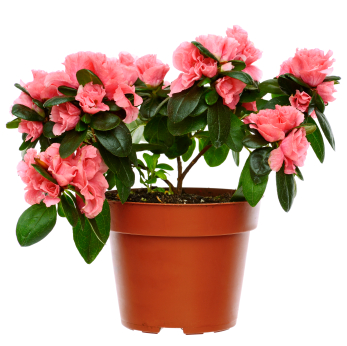

Azalea
Not Recommended- Toxic to humans and pets
Benefit- Plant removes formaldehyde from the air.


Boston Fern
Benefit- Plant adds moisture to the air.


Corn Plant
Not Recommended- Safe for humans, not recommended if you have pets.
Benefit- Plant removes formaldehyde from the air.


English Ivy
Not Recommended- Toxic to Adults and Children.
Benefit- Plant removes benzene from the air.
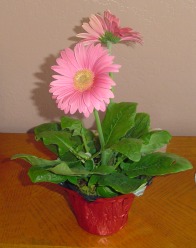

Gerbera Daisy
Benefit- Release oxygen at night and removes benzene and trichloroethylene from the air. It is still effective even when it loses its bloom.
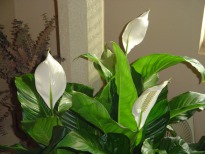

Peace Lily
Not Recommended- This house plant may be poisonous to cats and dogs.
Benefit- This plant removes benzene, trichloroethylene, and mold spores from the air.
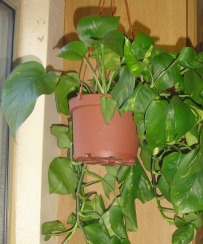

Philodendron
Not Recommended- Poisonous to humans and pets if plant leaves ingested.
Benefit- Purifies air by removing formaldehyde and is an effective purifier in your home if it has been newly renovated with new floors, walls, or carpet.
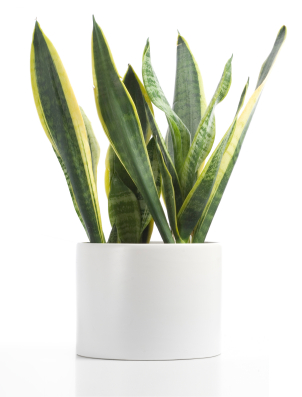

Snake Plant (also called Mother-in-laws tongue)
Benefit- One of the best indoor plants you can have, because it tolerates almost complete neglect and is a superb air purifier, as well as remove nitrogen oxide produced by fuel burning appliances such as wood stoves or fire places. Also, this plant removes formaldehyde as efficiently as the philodendron.
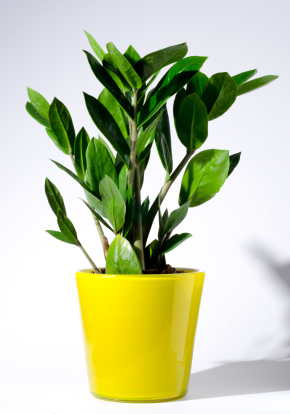

Zeezee Plant
Benefit- Air purifier, removes formaldehyde, and nitrogen oxide produced by fuel burning appliances. The zeezee plant can also tolerate neglect, and similar to the snake plant it will tolerate any shady location in your home.
I recommend you add these two plants to your best indoor plants list.
This concludes this article on best indoor plants for your home, and before I leave you, if you're interested in a copy of my book, be sure to visit Amazon.com Kindle. If you don't have a Kindle reader, you can still download a copy on your computer. If you do, don't forget to give a review. They are so important for me to know to make this book more informative for The Beginner House Plant Owner.
Here is the link to go to Amazon for the book. Growing House Plants for The Beginner Enthusiast.
Thanks!
I hope you have found the information and pictures on best indoor plants informative and interesting.
For some of you especially the experienced green thumb plant owners, there may not have been much new in this article that you already didn't know. And, for you guys and gals, I would really love to hear from you.
If you have any tips and suggestion that I can include in this article best indoor plants for your home, that will benefit the Beginner Indoor Plant owner, please reply below.
To read articles on How to Grow a Successful Vegetable Garden you can do so by clicking on best indoor plants to leave this article and go to our home page.
Before you leave why not drop into My Gift Shop for a peek and see if you find something of interest for you, family, or friends.
My Suggestion for The Beginner Plant Owner
What is your Best Indoor Plant tips and suggestion you would offer to a Beginner Indoor Plant owner?
If you have any pictures of your suggestion, please add them.
Thanks guys and gals for taking your time to help the Beginner Indoor Plant Owner.
Like me, I'm sure they will really appreciate your thoughts.
What Other Visitors Have Said
Click below to see contributions from other visitors to this page...
My Flowering Plants 




What I do with my little plants that have flowers is when they loose their flowers, I move them outdoors when the weather is warm and when they bloom again, …
I love my african violets 




When I first started collecting a couple of African Violet Plants, I noticed they were getting fungus on their leaves.
I discovered if I put the pot …
Copyright © 2008-2019 All rights reserved.
